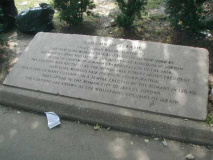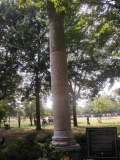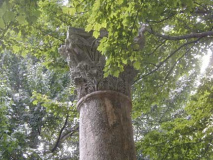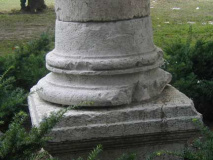What a beautiful world it will be
What a glorious time to be free
When Donald Fagen of Steely Dan had a hit with “I.G.Y.” (referencing the 1957-58 International Geophysical Year) in 1982, he wasn’t talking about the New York 1964-1965 World’s Fair in Flushing Meadows Corona Park in Queens, but with its elegiac references to now-forgotten or never-attained dreams of the future, he might as well have been. The 1939-40 World’s Fair may have been more storied and better-remembered in literature for its whiz-bang predictions of a better world just as Hitler was plunging Europe into war and the Perisphere and Trylon were soon to be melted down to make bombs, but the 64-65 Fair had its whiz-bang moments as well…and your webmaster was there, making the pictures of it on this page possible.

NYC has pretty much eradicated much of the 1964-65 Fair, other than its more daring, audacious structures. Yet, here and there, you’ll see traces of the temporary, yet magnificent, buildings that were supposed to be the portals to the Space Age. As in 1939, war and economic meltdown pretty much scotched the more futuristic predictions. And nothing forecast the internet.
By the way, we’ll NOT be doing a comprehensive overview of the Fair. There are a couple of other sites out there that do that, and do it well, and you can find links to them at the bottom of the page.

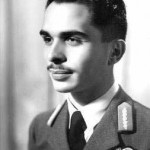
According to the NYC Bureau of Parks, the Jordanian pavilion was a splendid “multi-peaked-and domed structure with an undulating roof, and surfaced in gold mosaic and shimmering blue glass.” It sat near the Court of the Astronauts, between the pavilions of the United Arabic Republic and Sudan at the site now marked by this Column.
The Column is also marked by this tablet on the park path. It’s likely the second-oldest man-made object in a New York City park (after the Egyptian obelisk known as “Cleopatra’s Needle” in Central Park, which is fully 3500 years old).

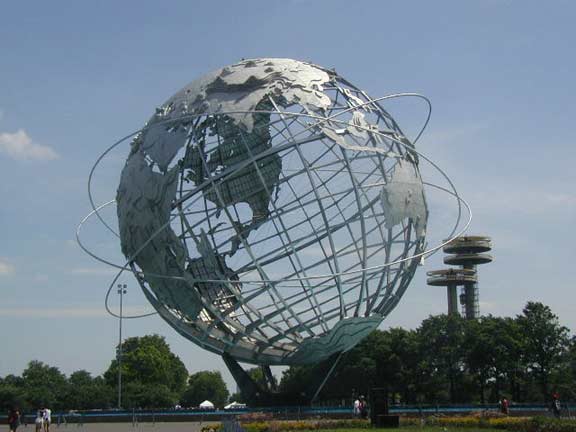
For out of towners and Queens visitors, the Unisphere can be a surprising and impressive sight for those who aren’t familiar with it: it seems to rise above the trees and buildings like a second moon when you are in the surrounding park and nearby neighborhoods of Corona and Queensboro Hill.
The 35-ton Unisphere has become Queens’ symbol in the 4 decades it has been in Flushing Meadows, and needs no introduction, being hardly Forgotten. There are some aspects to this 140’x120′ behemoth that you may not be aware of, though.
—Though Earth has no rings, unlike Jupiter, Saturn, Uranus and Neptune, the Unisphere has three. Its rings represent the orbits of the first American astronaut, the first Russian cosmonaut and the first communications satellite to orbit the Earth.
—It was quite an engineering feat to make the Unisphere stay in place, because the Pacific Ocean part of it is much lighter than the section showing Africa, Asia and Europe.
—The Unisphere tilts at the same approximate 23.5-degree angle the Earth does as it orbits the sun. The angle is believed by astronomers to be the result of the close pass or perhaps even the Velikovsky-esque collision of a Mars-size body with Earth in the solar system’s earliest days. It’s this 23.5-degree angle that allows the sun to shine on earth at different angles depending on the time of year, producing the four seasons, and perhaps, ultimately, the 4 Seasons.
Your webmaster and the Unisphere, 1964
Tommy Lee Jones and Will Smith shoot down the aliens’ spaceship at the Unisphere in 1997
The NY State Pavilion contained striking visuals both above and below. Texaco funded a giant map of New York state on the pavilion floor with 567 mosaic terrazo panels weighing about 400 lbs. each. Rand McNally supplied the topographic information, and Texaco furnished the location of each of its gas stations in the state. When the pavilion’s roof was removed due to its deterioration borne of general negligence, the Texaco map was open to the elements. It’s still there, but padlocked and severely decayed.
In the mid-1980s the Texaco map was still open to the public, and John Flansburgh and John Linnell of They Might Be Giants filmed a promo video for “Don’t Let’s Start” from their breakthrough ‘eponymous’ LP there. Flansburgh is known to be a comprehensive collector of all things ’64-’65 Fair.
The cutout face in the video depicts editor/politician William Allen White.
A view of the roof of the Tent of Tomorrow in 1964 showing its original panels. Orange and blue are the primary colors, and those colors were also featured on the Fair’s official literature. Coincidentally or not, the Fair’s neighbor across Roosevelt Avenue, the Amazing Mets’ home Shea Stadium, also featured large orange and blue panels on its exterior (that were removed in the late 1970s).
Another remnant of the NY State Pavilion is “Theaterama” which originally exhibited pop-art works by Andy Warhol andRoy Lichtenstein. The theatre operated until 1985, when it was closed for renovation, reopening in 1994 as the Queens Theatre in the Park.
The Amphitheatre soldiered on for some decades after the Fair, but succumbed to deferred maintenance and was finally pickaxed to oblivion in the mid-1990s.
About ten years after the final disappearance of the Aquacade, a pedestrian pavilion slowly took shape along Flushing Meadows’ Meadow Lake. The Aquacade is remembered by a pavement mosaic at the park’s main entrance on the walkway leading to the IRT subway.
Rocket Thrower is one of a number of statues created for the Fair that had flight or space travel as a theme. (The Fair also boasted the Court of Astronauts, Fountain of the Planets, etc.) The stylized sculpture depicts a giant throwing a rocket (in his right hand) through a network of stars (in his left). After the Fair opened, reviews of Donald De Lue’s sculpture were decidedly mixed. NY Times art reviewer John Canaday called it a “most lamentable monster, making Walt Disney look like Leonardo Da Vinci.”
Both statues are by Boston sculptor Donald De Lue. While Rocket Thrower occupies a plum location in the park, on one of the paths radiating from the Unisphere, you have to take quite a detour to reach George, who’s in a rather remote stretch of the park, off the beaten path. Strictly speaking, George Washington was not created for the Fair, but made its first appearance in the park in 1959. It was restored in 1999; appropriately, cherry trees now surround the sculpture.
In 1964, my father stands outside the Vatican pavilion, whose main claim to fame was Michelangelo’s marble masterpiece the Pieta, in which Christ’s mother holds his prone body after His Crucifixion. The pavilion also featered a number of other masterpieces from the medieval to the modern eras. Pope Paul VI made an appearance at the pavilion in 1965. Today an inscribed marble bench, the “Exedra,” marks its spot. My father was 46 in ’64, the same age as your webmaster was when I was writing this page. It’s a big circle, this life we lead.
The Mormons were not to be outdone; the Church of Latter-Day Saints had a partial reproduction of the triple-towered Salt Lake City Mormon Temple with a golden statue of the Angel Moroni at the apex of the middle tower.
One feature of the Fair I really wish they had kept around was the monorail, which might have been the logical successor to the rattling els in the ‘outer boroughs.’
This was taken by my father at the Chrysler exhibit, but what was the structure on the left?
My mother and I are at one of the fountains. Again, can anyone identify the exhibit in the rear?
Back to the future…
This little concrete slab, in its own little circular plaza next to the New York State Pavilion (see above), is what remains of the Westinghouse Pavilion. The electrics giant featured the 1939 time capsule, including a slide rule, a woman’s hat, synthetic rubber, 10 million words on microfilm taken from books, magazines and newspapers and messages to the future from Albert Einstein and others. Westinghouse also built a new time capsule in 1964, including filtered cigarettes, a Beatles record, irradiated seeds, freeze-dried foods and a rechargeable flashlight. The cutting edge.
Don’t open till 6964! The time capsule is supposed to last 5000 years. Well, it’s lasted about 45 years so it’s off to a good start. I wish I could see what it’s going to be like in 6964. I enjoy time travel stories. I’ve seen all three Time Machine movies and H.G. Wells’ time traveler made it to April 802,701 so 6965 shouldn’t be that tough. We do know one thing: 6964 will be as different from 1964 as today is from 5000 years ago.
The Hall of Science is one of 4 buildings from the ’64 Fair still in active use (the others are Theaterama, now Queens Theatre in the Park, the Port Authority Heliport, now known as Terrace on the Park, and the Singer Bowl, now Louis Armstrong Stadium). Its 1964 exhibits included A Journey Into Space, How The Brain Works, The Way We Hear, Chemical Man (the body’s cellular structure), The Color Center, Atoms For Children, The Chemistry of Oceans, Flight Control, The War Against Cancer, the Diagnosis of Disease, and the Chemistry of Color.
New York architecture is rather staid. Even the original, more daring plans by Daniel Libeskind to replace the World Trade Center have been considerably watered down, and we may be left with rather doctrinaire office towers. That’s why it’s notable to see an interesting item like the Hall of Science, whose rolling, undulating sheets of concrete are punctuated by squares of stained glass (it’s even more impressive from the inside). It was built by Harrison & Abramovitz and rethought and reconstructed by the Polshek Partnership in 1999.
About 30 years before the appearance of Marshall Fredericks’ aquamarine sculpture, Frederick MacMonnies’ Civic Virtue was banished from City Hall Park to the hinterlands of Kew Gardens; the statue’s depiction of the triumph of Civic Virtue over two writhing mermaids symbolizing corruption was deemed too risqué for City Hall. What a difference a few decades make…Freedom of the Human Spirit‘s male and female figures are as unabashedly naked as a couple of models from a Spencer Tunick nude-in. Fredericks wasn’t going for prurience. As he explained it, “I realized that great multitudes of people, of all ages, and from all walks of life would see this sculpture and I tried to design the work so that it was as free of the earth, as free in space as possible — the thought that we can free ourselves from earth, from the material forces which try to restrain and hamper us, is a happy, encouraging and inspiring one, and I sincerely hope that my work will convey this message.”
The statue originally stood in the 1964 Fair’s version of the Court of States. In 1996 it was renovated and resurfaced and moved to its present position in front of the main entrance to the Arthur Ashe US Tennis Center and facing the Unisphere.
I never fail to bore my friends when I ask, “What two NYC stadia, across the street from each other, are anagrams of each other?” The answer: Shea and Ashe Stadiums.
And now I can’t ask anymore.
Few remember this, but José de Rivera’s polished crescent Free Form originally revolved on top of its base (the motor conked out in 1972 and was never re-started). De Rivera (1904-1985) created his statues with his own hands, forging and hammering his materials personally. As a result, he suffered a hearing loss. Beginning as a craftsman in Chicago, he worked as a pipefitter and die caster. Many of his works are steel or bronze bands twisted into 3-dimensional shapes.
Located on a rather out-of-the-way path between the Hall of Science and the parking lot along the LIRR, Polish-born Theodore Roszak’s (1907 – 1981) Forms in Transit vaguely resembles the now-retired Concorde jet, which would not begin flying for a few years after 1964. A resident of Staten Island since the 1930s, Roszak studied in France, Germany and Czechoslovakia and was employed during World War II by Brewster Aircraft on the assembly line. After works such as Spectre of Kitty Hawk (at MOMA) and Sentinel (now on 1st Ave & 27th Street) he received a commission for the NY World’s Fair and produced Forms in Transit, a 43-ft. long work made of aluminum and steel, meant to embody the spirit of flight without depicting a specific airplane. Part of the statue became corroded and was removed in 1970, but the exterior skin has been allowed to remain weathered to show the vessel passing through the atmosphere.
The Vatican Pavilion was among the Fair’s most popular attractions. Michelangelo’s Pieta, the moving representation of Mary grieving over the prone body of Christ after His crucifixion, was the main exhibit. The Pieta, completed in 1499, was 465 years old in 1964, and this marked the first time it had been exhibited outside of St. Peter’s Basilica in Rome. It was brought and returned on the Italian liner Cristoforo Colombo and displayed behind bulletproof plexiglas.
Pieta is the only sculpture Michelangelo ever signed. After the statue was unveiled, the great sculptor overheard some patrons attributing the work to other contemporary artists, so Michelangelo decided to mark the statue as his own, a decision he later regretted since he believed his mark disrupted the statue’s artistic purity.
Today a marble bench, known as the Exedra, marks the location of the Pavilion. It contains an inscription invoking Pope Paul VI’s visit to the Fair in October 1965 near the end of its run.
One of Flushing Meadows’ only holdovers from the 1939-1940 Fair is the Queens Museum of Art, designed by Aymar Embury in 1939 and redesigned by Raphael Vinoly in 1994; originally called the New York City Building. It contains one of the 1964 Fair’s most notable exhibits: The Panorama of New York, a scale model of the entire city showing the city’s seven bridges, highways, subways, the Empire State Building (15 inches high), more than 800,000 miniatures of every NYC building, the Queens airports with tiny planes overhead and thousands of tiny homes, and a notable subtraction, replaced by a red, white and blue ribbon.
The NY City Building was the temporary home of the United Nations from its organization in 1946 to 1952 when it was moved to the newly finished U.N. complex in Manhattan. The state of Israel came into being here in Flushing Meadows in 1948.
A brand new lobby area opened in the winter of 2014.
Outside the pavilion, however, is another remnant from the 1939-1940 Fair, this one not nearly quite as pleasant. On July 4, 1940, two NYC detectives, Joseph Lynch and Ferdinand Socha, were sent to inspect a ticking suitcase at the British Pavilion. It turned out to be a bomb that exploded, killing the policemen. The planters never identified themselves; it is suspected there may have been a Nazi connection, though this may never be known.
This concrete slab hidden in the grass opposite the “Free Form” statue (see below) likely is all that recalls the 1939 Fair’s Court of States, which included exhibits from 33 states plus Puerto Rico. The court featured a large dome, the Virginia exhibit (the 1939 Fair marked the 150th anniversary of Virginian George Washington’s inauguration at Federal Hall on Wall Street).
It turns out this is a mere relic from 1964, not 1939. Forgotten Fan Richard Post reports:
The “Court of the 1939 World’s Fair” was the second Fair’s homage to the First — in 1939 that same area was the “Court of Communications” around which there were RCA, IBM adding machines and time clocks, Crosley Radios (refrigerators and cars),and Bell Telephone with their futuristic and somewhat frightening keyboard controlled human voice synthesizer.
SOURCES
7/13/2003, revised 2012
